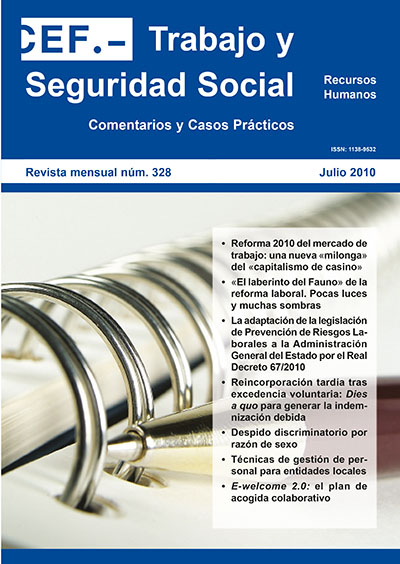«E-welcome 2.0»: The collaborative new employee orientation program
DOI:
https://doi.org/10.51302/rtss.2010.5281Keywords:
new employee orientation, collaborative learning, communal constructivism, learning management system, mentorAbstract
In these hard days, the current crisis situation requires many companies to pay special attention to cost reduction to optimize their results.
In line with this trend, when incorporating new talent into the organization, HHRR areas need, more than ever, plan with the utmost care the recruitment process and the first weeks of work of newly incorporated. The proper implementation of these stages will accelerate, in an efficient way, the integration of the new members of the staff, optimizing their performance and their alignment with corporate mission and values.
In this research we want to highlight the importance of an effective New Employee Orientation Program:
• First of all, as a way to avoid turnover, with the consequent cost saving,
• and secondly, to speed up the optimum immersion of the new collaborator in his position, in the team and in the company he has just joined, consequently achieving results in the short term.
This plan has been created applying classic new employee orientation program roles and means, as well as an e-learning supporting tool. This tool is a LMS (Learning Management System) platform supporting collaborative learning process, enabling an easy teamwork immersion. We have called this plan «e-welcome 2.0», which is defined as a «New employee orientation program which combines, in a structured and simultaneous way, the methodology of traditional training on the job, along with the collaborative and communal constructivism learning supported by an e-learning platform».
Downloads
References
Bader, G.E. y Bloom, A.E. [1994]: «Cómo lograr que los resultados de la formación perduren». Cap. 4, págs. 35 a 38. ED. Centro de Estudios Ramón Areces.
Barbazette, J. [2007]: Successful New Employee Orientation. 3.ª edición. Pfeiffer.
Dirube Mañueco J.L. [2004]: «Un modelo de gestión por competencias». Cap. 3, 4, 5 y 6. Epise.
Font, A. e Imbernón, F. [2006]: «Análisis de necesidades de Formación», Tema 2 de La Planificación de la Formación Continua. UB Virtual.
Gairín, J. y Armengal, C. [2003]: Estrategias de Formación para el Cambio Organizacional. Praxis.
García Yuste, J. [2005]: El plan de formación de la empresa, págs. 35 a 158. Mad Comunicación.
Guerra-López, I.J. [2007]: Evaluating Impact. Hdr Press.
– [2008]: Performance Evaluation. Jossey-Bass.
Horton, W. [2001]: Evaluating E-learning. Alexandria, VA.
Kirkpatrick, D.L. y Kirkpatrick, J.D. [2000]: Evaluación de acciones formativas. Los cuatro niveles. Epise-Gestión.
Lawson, K. [2002]: New employee Orientation Training. Astd Press.
Monserrete, C. [2006]: «Metacompetencias: Gestión de personas en tiempos de desconcierto». Informe 3. págs. 115 a 133. Rbtecnology.
Navío, A. [1996]: Análisis y detección de necesidades de formación. Tejada, J. y Giménez, V. (Coord.), págs. 71 a 141. Thomson-Grupo Cifo.
Sims D.M. [2001]: Creative New Employee Orientation Programs. Mcgraw-Hill.


















